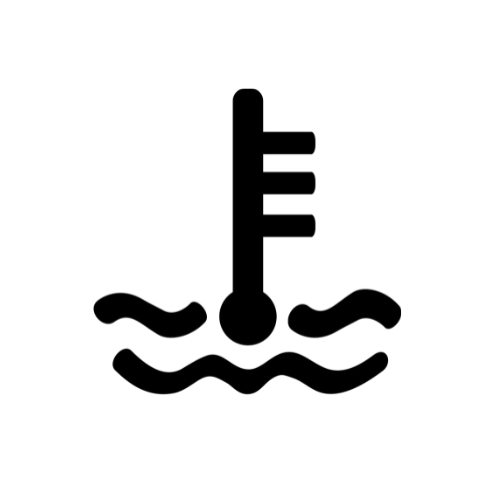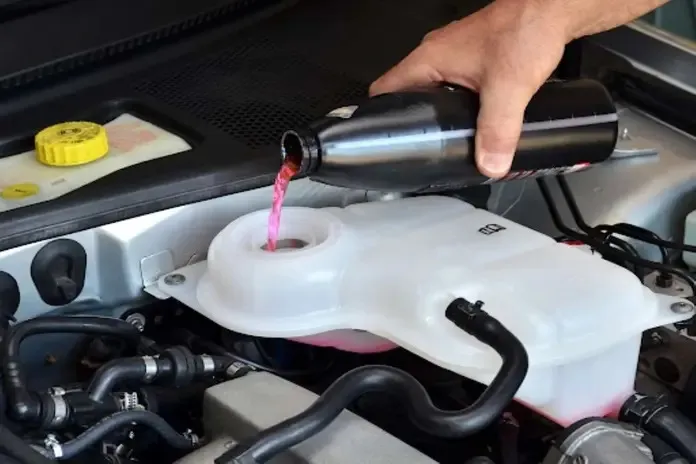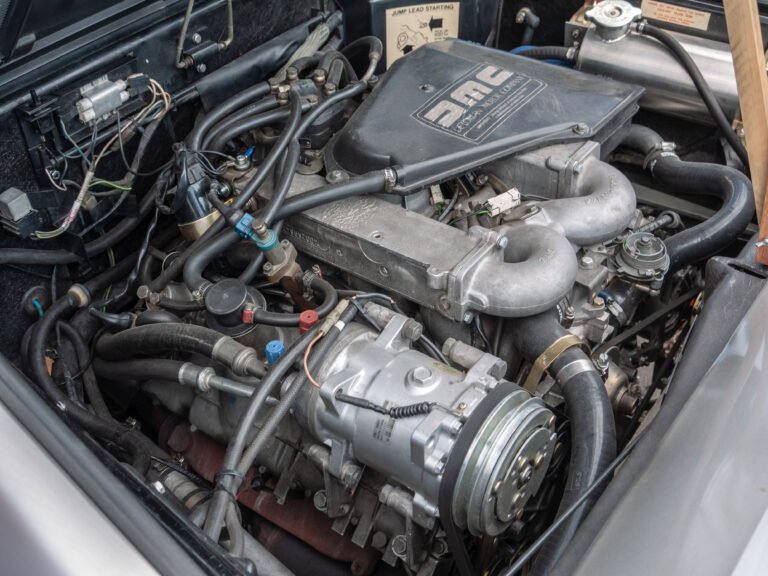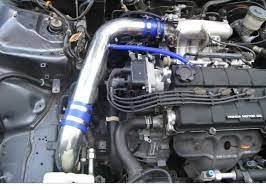Can You Mix Red And Pink Coolant? Avoid Engine Risks!
Yes, you can mix red and pink coolant as long as they are both the same type (either ethylene glycol or propylene glycol-based). It is important to use the same type of coolant to avoid any potential chemical reactions.
Mixing different types of coolant can lead to corrosion and damage to the cooling system. When it comes to maintaining your vehicle’s cooling system, using the correct coolant is essential. Coolant, also known as antifreeze, helps regulate the temperature of the engine and prevent it from overheating.
It is available in different colors, such as red and pink, which can sometimes cause confusion among vehicle owners. In this blog post, we will discuss whether it is safe to mix red and pink coolant, the importance of using the right type of coolant, and how to properly maintain your vehicle’s cooling system.
The Importance Of Proper Coolant Use

Mixing red and pink coolant can lead to potential issues as they have different chemical compositions. It’s crucial to use the right coolant for your vehicle to avoid damage and ensure optimal engine performance. Always follow manufacturer recommendations for proper coolant use.
Role Of Coolant In Engine Health
Proper coolant use is essential for maintaining the health of your engine. Coolant, also known as antifreeze, is responsible for regulating the temperature of your engine and preventing it from overheating. It also plays a crucial role in preventing corrosion and rust buildup inside the engine.
Risks Of Incorrect Coolant Mixture
Mixing red and pink coolant can lead to potential risks for your engine. Both coolants contain different chemical compositions and mixing them can cause a chemical reaction that can harm your engine. For example, mixing certain types of coolant can cause the engine to overheat, leading to costly repairs.
Using the wrong type of coolant or mixing coolants can also lead to the buildup of rust, sludge, and other contaminants in the engine. This can cause damage to the engine and decrease its lifespan.
It’s important to always use the correct type of coolant recommended by the manufacturer and avoid mixing different types of coolant to prevent any potential risks.
| Correct Coolant | Incorrect Coolant |
|---|---|
| Red Coolant | Pink Coolant |
| Green Coolant | Orange Coolant |
| Blue Coolant | Purple Coolant |
In conclusion, the importance of proper coolant use cannot be overstated. Mixing red and pink coolant can lead to potential risks for your engine, and it’s crucial to always use the correct type of coolant recommended by the manufacturer. By doing so, you can ensure that your engine stays healthy and runs smoothly for years to come.
Basic Coolant Colors And Types
Mixing red and pink coolant is not recommended as it can alter the chemical balance and potentially lead to cooling system issues. It’s best to stick to the same type and color of coolant to maintain the integrity of the system.
Understanding Different Coolant Colors
When it comes to the world of coolants, it’s essential to understand the significance of different colors and their specific uses. Red and pink are two common coolant colors, each serving distinct purposes. Let’s delve into the basics of coolant colors and types.
Coolant Types And Their Specific Uses
| Coolant Color | Specific Use |
|---|---|
| Red | Typically used in traditional ethylene glycol coolants for older vehicles. |
| Pink | Often found in newer OAT (organic acid technology) coolants, offering extended lifespan and corrosion protection. |
- Red coolant, containing silicates and phosphates, is suitable for older car models.
- Pink coolant, with its OAT composition, is more compatible with modern vehicles.
In summary, understanding the different coolant colors and types is crucial for maintaining the optimal performance and longevity of your vehicle.
Mixing Red And Pink Coolant: The Debate
Mixing red and pink coolant has sparked a heated debate among car enthusiasts. Some argue that it’s perfectly fine to mix the two, while others caution against it due to potential chemical reactions. The topic of whether you can mix red and pink coolant remains a hot topic in the automotive community.
Mixing red and pink coolant has been a hot topic of discussion among car owners and mechanics for years. While some people believe that mixing coolants is safe, others argue that it can damage your car’s engine. Let’s explore the debate and find out if mixing red and pink coolant is ever safe.
Is Mixing Coolants Ever Safe?
Mixing coolants can be safe, but it depends on the type of coolant and the vehicle you’re using it in. If you’re mixing two coolants that are compatible with each other, then it’s safe to do so. However, if you mix incompatible coolants, it can lead to damage to your car’s engine and cooling system. It’s always best to check with your car’s manufacturer before mixing any coolants.
Myths Vs. Facts About Coolant Mixing

There are many myths surrounding coolant mixing that have been debunked by experts. Here are some of the most common myths and the facts:
Myth: Mixing coolants will cause them to solidify.
Fact: This is not true. Coolants are designed to remain liquid even when mixed with other coolants.
Myth: Mixing coolants will cause corrosion.
Fact: This is partially true. If you mix coolants that are not compatible, it can lead to corrosion. However, if you mix compatible coolants, corrosion is not a concern.
Myth: Mixing coolants will decrease their effectiveness.
Fact: This is not necessarily true. If you mix compatible coolants, the effectiveness will not be affected. However, if you mix incompatible coolants, it can lead to decreased effectiveness.
In conclusion, mixing red and pink coolant can be safe, but it’s important to make sure that the two coolants are compatible. Always check with your car’s manufacturer before mixing any coolants to avoid potential damage to your engine and cooling system.
Chemical Composition Of Red And Pink Coolant
When it comes to coolant for your vehicle’s engine, it’s important to understand the chemical composition of different types. In this blog post, we will focus on the characteristics of red coolant and properties of pink coolant, exploring whether they can be mixed.
Red Coolant Characteristics
Red coolant, also known as ethylene glycol-based coolant, is a popular choice for many vehicles. It contains a mix of ethylene glycol, water, and various additives that enhance its performance. The primary purpose of red coolant is to regulate the engine temperature and prevent overheating.
Here are some key characteristics of red coolant:
- Excellent heat transfer properties
- Effective corrosion protection for engine components
- Offers freeze protection in cold temperatures
- Longer lifespan compared to other types of coolant
Overall, red coolant provides reliable engine protection and is widely used in both gasoline and diesel engines.
Pink Coolant Properties
Pink coolant, also known as extended-life coolant or OAT (Organic Acid Technology) coolant, is another commonly used coolant option. It is distinguished by its pink or orange color, which helps to differentiate it from other types of coolant.
Here are some properties of pink coolant:
- Contains a mixture of ethylene glycol or propylene glycol, water, and organic acid corrosion inhibitors
- Offers extended service life, typically up to 5 years or 150,000 miles
- Provides excellent protection against corrosion and cavitation
- Compatible with a wide range of materials, including aluminum and brass
Pink coolant is specifically formulated to meet the requirements of modern engines and provides long-lasting protection under various operating conditions.
Now that we have explored the chemical composition and properties of red and pink coolant, let’s discuss whether it is possible to mix these two types.
Potential Engine Risks From Mixing Coolants
Mixing red and pink coolant in your engine can pose potential risks. The combination of different coolants can lead to chemical reactions, resulting in engine damage. It’s essential to use the correct coolant for your vehicle to avoid any potential engine issues.
Corrosion And Deposits
When mixing red and pink coolant in your engine, you run the risk of potential engine damage due to corrosion and deposits. Coolants are designed with specific additives and properties that help protect your engine from rust and deposits. Mixing different types of coolants can disrupt this delicate balance, leaving your engine vulnerable to corrosion and the buildup of harmful deposits.
Corrosion occurs when different types of coolant react chemically and create an environment that promotes the formation of rust. Rust can eat away at vital engine components, leading to leaks, decreased performance, and potential engine failure. Additionally, mixing coolants can cause deposits to form, which can clog up your cooling system and restrict the flow of coolant. This can result in overheating, engine damage, and costly repairs.
Cooling System Clogs And Failures
Mixing red and pink coolant can also lead to cooling system clogs and failures. Coolants are responsible for regulating the temperature of your engine by transferring heat away from critical components. When different types of coolants are mixed, they can create a sludge-like substance that can accumulate in the cooling system.
This sludge can clog up the radiator, hoses, and other cooling system components, preventing proper coolant flow. Without adequate coolant circulation, your engine can overheat, causing severe damage to the engine block, cylinder heads, and other internal components. In extreme cases, this can even lead to engine failure, leaving you stranded and facing expensive repairs.
It is important to note that the specific risks and consequences of mixing coolants may vary depending on the types of coolants involved. Always consult your vehicle manufacturer’s recommendations and guidelines for the proper coolant to use in your specific engine.
Manufacturer Guidelines On Coolant Mixing
Manufacturer guidelines on coolant mixing are important to follow to ensure the proper functioning and longevity of your vehicle’s cooling system. Understanding what car manuals say about coolant and the potential warranty concerns with coolant mixing can help you make informed decisions regarding your vehicle’s maintenance.
What Car Manuals Say About Coolant
Car manuals typically provide specific instructions on the type of coolant that should be used in a vehicle. Using the wrong type of coolant can lead to corrosion and damage to the cooling system. It’s essential to consult the car manual to determine whether red and pink coolants can be mixed in your particular vehicle.
Warranty Concerns With Coolant Mixing
Mixing coolants that are not compatible can void the vehicle’s warranty. Manufacturers often specify the type of coolant that should be used to maintain the warranty coverage. Failure to adhere to these guidelines may result in costly repairs not covered by the warranty.
Proper Coolant Mixing Techniques
Proper coolant mixing techniques are crucial for maintaining the health of your engine. Red and pink coolants are not recommended to be mixed, as it can result in potential damage to your engine. It’s best to stick to one type of coolant and avoid mixing different colors.
Safe Practices For Mixing Coolant
Mix red and pink coolant only if compatible, check manufacturer guidelines.
Check coolant type before mixing to avoid damage to the engine.
Tools And Equipment For Coolant Maintenance
Use a coolant tester to check concentration levels accurately.
Invest in a refractometer for precise coolant mixture measurements.
Alternatives To Mixing Coolants
Mixing red and pink coolant can lead to chemical reactions, which may result in engine damage. It’s best to stick to a single type of coolant to avoid any potential issues. Always check your vehicle’s manual for the recommended coolant type.
Using Universal Coolants
Universal coolants can be used as an alternative to mixing red and pink coolants. They are compatible with various types of coolants.
Professional Coolant Flushing Services
Professional coolant flushing services are recommended to ensure proper maintenance of your vehicle’s cooling system.
Expert Advice On Coolant Use
Mixing red and pink coolant is not recommended as it can cause chemical reactions and compromise the effectiveness of the coolant. It’s best to use the same type of coolant recommended by the manufacturer and avoid mixing different colors or brands.
Seek expert advice if unsure.
Mechanic Insights On Coolant Mixing
It’s vital to understand the impact of mixing red and pink coolants.
Common Faqs On Coolant Usage
Clear up confusion with these expert answers to common questions.
Conclusion
It is not recommended to mix red and pink coolant in your vehicle. Doing so can potentially cause damage to your engine and cooling system. It is best to stick to one type of coolant as specified by your manufacturer for optimal performance and longevity of your vehicle.

At CoolantInCar, we are dedicated to demystifying the world of engine coolant and cooling systems.






Thanks for sharing. I read many of your blog posts, cool, your blog is very good.